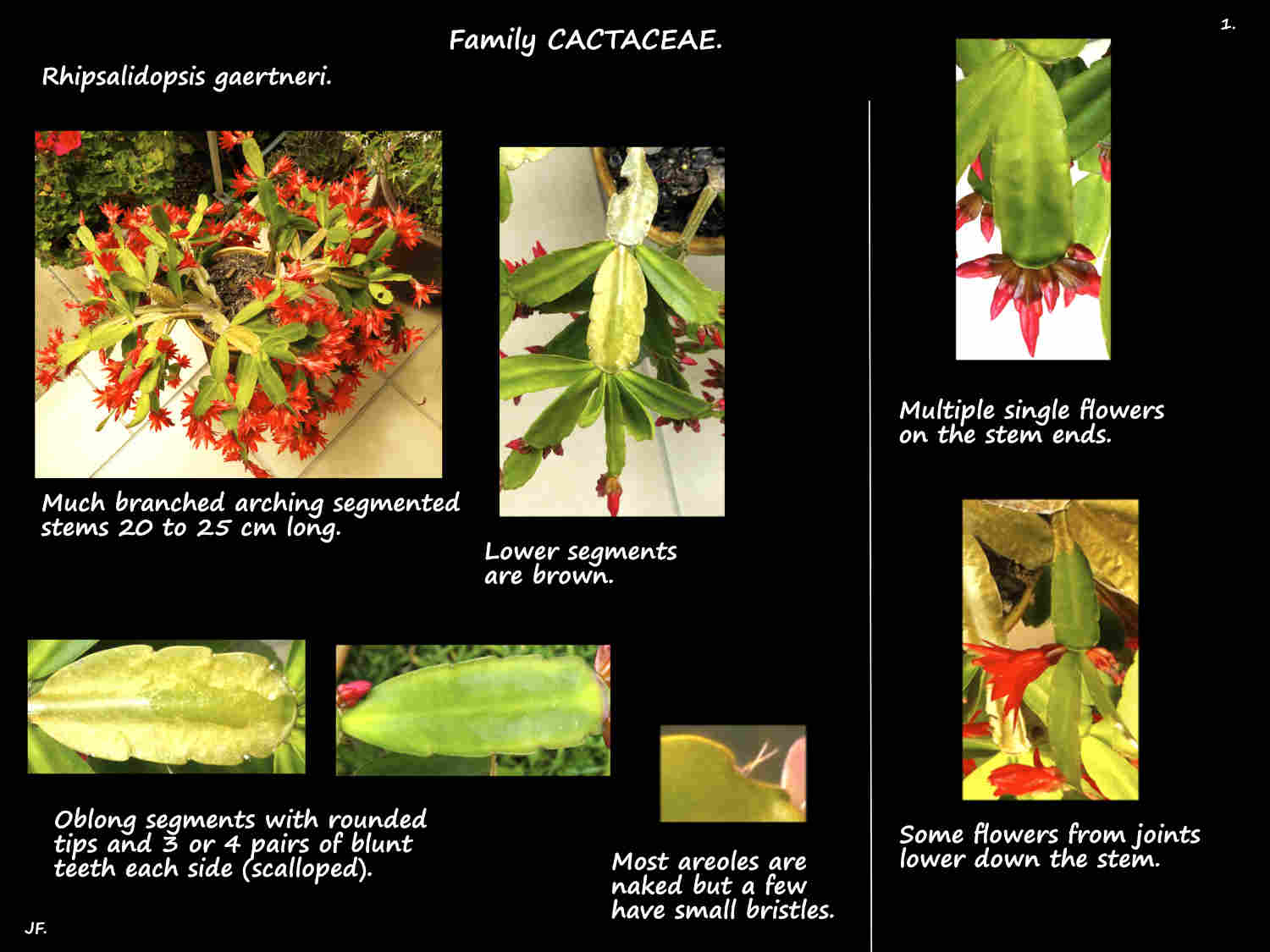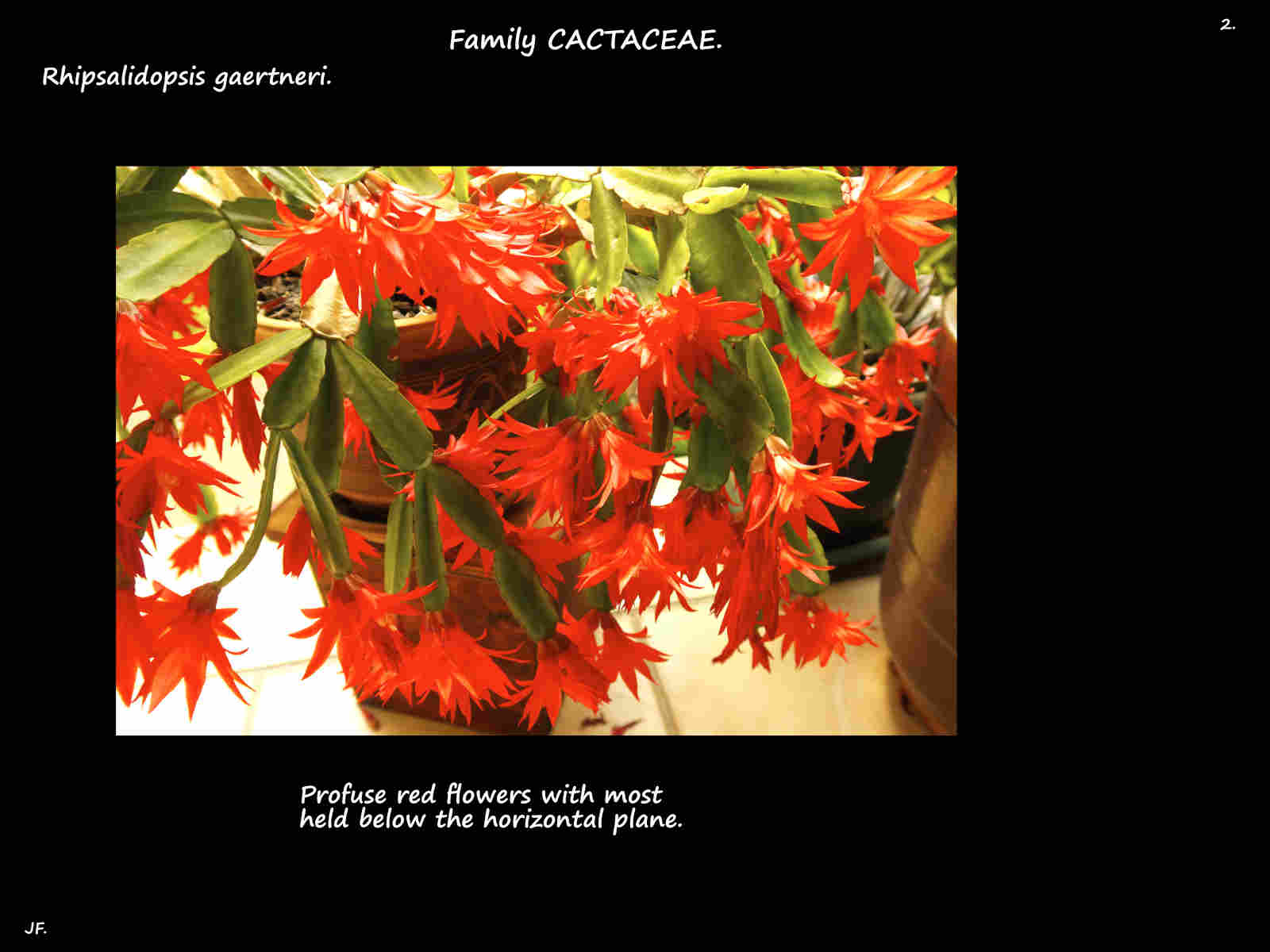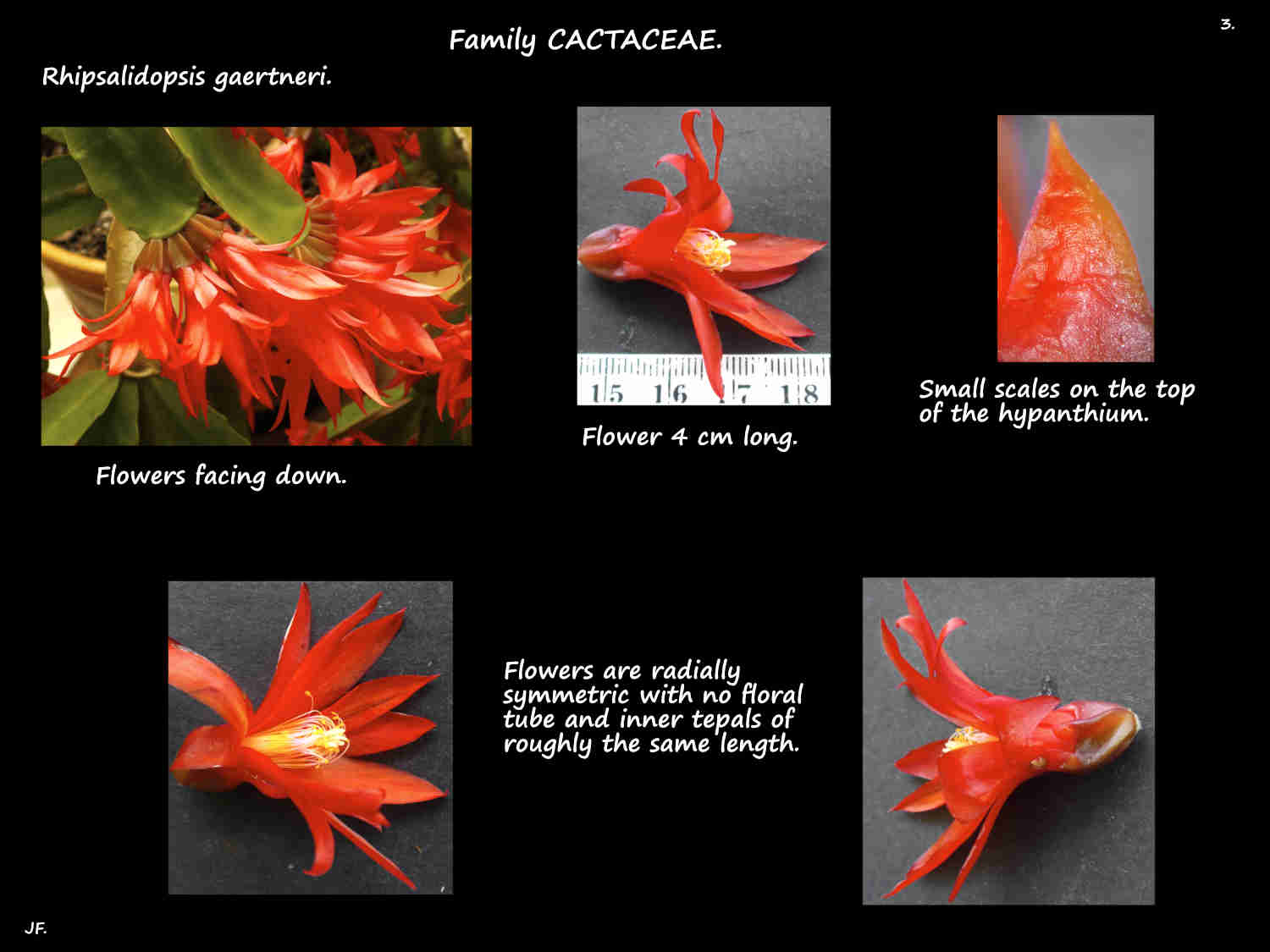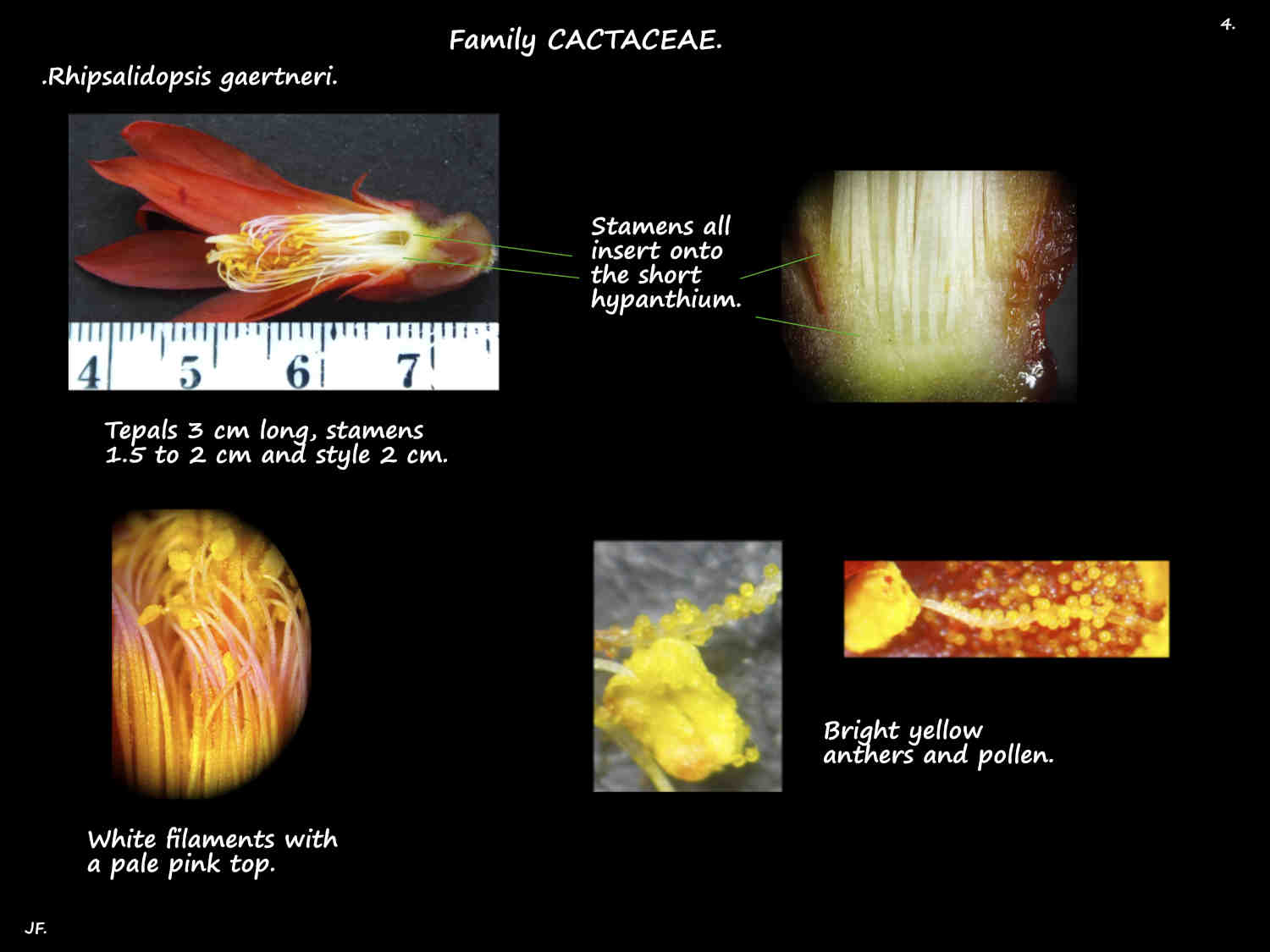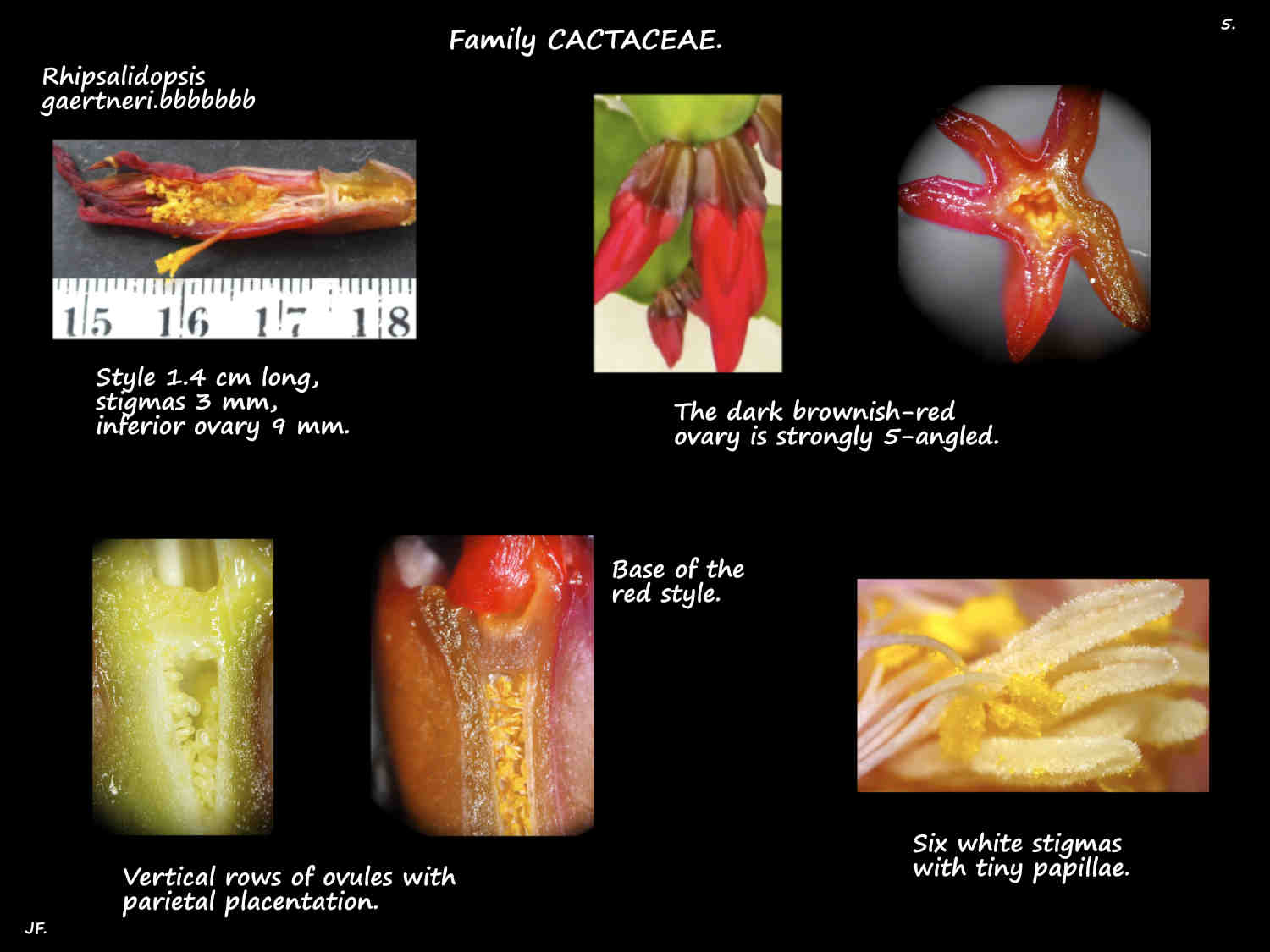Rhipsalidopsis gaertneri.
The Easter cactus has 13 synonyms and has been in the genera Epiphyllum, Hatiora, Hariota, Phyllocactus and Rhipsalis.
A widely grown plant it is still seen in gardening sites as Schlumbergera.
They are mainly epiphytic on trees but occasionally on rocks.
Older plants, up to 50 cm high and wide have a woody base and arching then pendulous stems that branch.
There are no leaves with photosynthesis taken over by modified stems.
Stems consist of flattened segments each up to 7 cm long and 2.5 cm wide.
These green oblong to obovate cladodes have slightly scalloped edges (crenate).
In each notch on the edge is an areole that may have a few bristles.
There is a row of areoles on the end of the terminal segment.
The flowers grow from these areoles and sometimes from segments further down the stem.
The funnel-shaped, radially symmetric flowers are up to 5 cm long and 7.5 cm across.
The burgundy receptacle, attached to the areole has longitudinal ridges.
The bases of the tepals and stamens are fused to form a sort hypanthium on the top of the receptacle.
The tepals are bright scarlet.
There is 1 whorl of stamens on the hypanthium.
The very strongly 5-angled inferior ovary has one locule with numerous ovules.
Ovules, in vertical rows are attached to the wall.
The single style has linear stigmas.
Fruit are burgundy berries 1 to 2 cm long.
It has been crossed with Rhipsalidopsis rosea to give cultivars with red, orange, pink or white flowers.
J.F.
